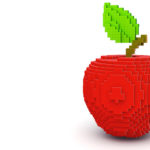
Food Content Marketers: Time to Put on Your Publishing Hat
You’ve definitely heard the old adage, content is king. But how exactly, can your food brand rule the content kingdom? In the year ahead, content marketing integration and adopting a publishing model might just be the most effective and efficient way possible.
Perhaps you made a business goal for 2019 to invest more in your food brand’s digital content. You want to be more relevant with your social media, create more custom digital assets, work more with food influencers, refresh your website, email marketing and native advertising. It’s a lofty goal, but if you’re thinking of these as separate entities you may discover you’re already lost.
According to Social Media Today’s 7 Top Content Marketing Trends You Can’t Ignore in 2019, “The days of lazy marketers throwing social content spaghetti at the virtual walls of Facebook, LinkedIn, Instagram and Twitter are over and done. They will not win in 2019. Period.” I would take that one step further and say, if you haven’t built one solid content marketing plan, inclusive of social and digital, then you have a huge opportunity to better optimize your resources.
The beauty of digital content is, through seamless content ideation and linking, it works together to strengthen your food brand’s overarching message. And when supported by a push/pull advertising model, every digital dollar and piece of content works that much harder for your business. In general, food brands are a bit late to the game of content marketing, but some progressive food media and food bloggers are experiencing a growing success. This is the year to dive in. Your customers are craving it.
Think Beyond Channel Marketing for Content Creation
Think of each piece of digital content as something that requires a lifecycle, a unique roadmap, and a plan for how it can work in different channels.
For instance, when creating a print ad your team works with a set of parameters to fit this particular medium. However, if the asset is created for digital, say a video or a blog post, the approach would be more integrated. Digital requires you to be channel-agnostic and put content first.
Let’s say you are working on a recipe video. The main video will live on your website but, if you put on your content marketer hat, you know you’ll need edited versions for social media, email campaigns, and digital ads. Suddenly, your 1-minute video becomes multiple pieces of content.
Looking deeper into one specific social channel, like Instagram, you will find you can have many versions of your content working in different ways. On this platform, the 1-minute video works best for the feed post, while a vertical, longer version is better for IGTV. Behind-the-scene shots are a good fit for Instagram Stories; a shorter 15-second cut can be used in ads; and perhaps you round everything out with a few Boomerang loops and/or GIFs as an added bonus. Suddenly, you are taking one food marketing asset on Instagram and turning it into seemingly endless possibilities.
Upgrade Brand Storytelling to a Publishing Model
Food brands need only look at retailers for some strong content marketing inspiration, whether it’s Costco Connection, Trader Joe’s Fearless Flyer, or Whole Foods’ blog and informative emails. In each of these you’ll find they are creating custom content as an added value to their customers. Yes, there are recipes highlighting their featured products, but there are also long-form stories and useful information in every piece of content.
Similar to the video example, if you start with a long-form article, you can slice and dice it in multiple ways. For instance, you can have pull-quotes or bite-size pieces for social media. And if you adopt your own publishing model, you can have your native advertising dollars drive directly to those pieces. In that way you aren’t working to market other news publications, bloggers, or influencers. You are getting to own your traffic and content, not to mention the enormous SEO value to your food brand’s website. Also, according to many experts, long-form content will be even more valuable this year as search engines are rewarding lengthier posts with better SERP positioning.
One CPG brand dominating the content marketing game is Red Bull. The beverages brand took their slogan “Gives You Wings” and launched an entire media division called Red Bull Media House. With multi-platform storytelling celebrating culture, sports, and lifestyle content, they elevated their brand far beyond an energy drink. Their approach has been at the cutting edge for more than a decade and they continue to innovate.
It is this kind of push-pull publishing model that gives your advertising dollars and food marketing content strategy more dimension and lets you share your brand with even more audiences and verticals that stretch beyond food.
Making Content Marketing Work for You
Content marketing isn’t the kind of marketing you can just whip up on a whim. It takes a lot of hard work and strategic thought. But the payoff can be huge. Finding the right strategy for your food brand not only means better results on Google, but as consumers choose your brand over others, you will also see an increase in sales. With this approach your brand remains top-of-mind and relevant to your customer.
 As another real-world example, we recently launched the California Walnut’s blog, and in a few short weeks have seen the benefits of an integrated content marketing strategy and publishing model. The brand already housed a robust recipe collection on their website. By using influencer videos in a different way, we have custom content turning separate pieces into relevant storytelling like 4 Must-Try Breakfast in Bed Recipes or Starting your Own Herb Garden is Easier than you Think.
As another real-world example, we recently launched the California Walnut’s blog, and in a few short weeks have seen the benefits of an integrated content marketing strategy and publishing model. The brand already housed a robust recipe collection on their website. By using influencer videos in a different way, we have custom content turning separate pieces into relevant storytelling like 4 Must-Try Breakfast in Bed Recipes or Starting your Own Herb Garden is Easier than you Think.
What Are You Waiting For?
Content marketing weaves together different pieces of content into one tidy bow and allows content to function separately serving each channel’s specific KPIs. Ideally, your marketing team would map your plan out in advance. However, you can also work the opposite way, taking separate landing pages or recipes and string them together in a story. Whatever approach you choose to take, you’ll rest easier knowing your content investment is working as hard as it can.






